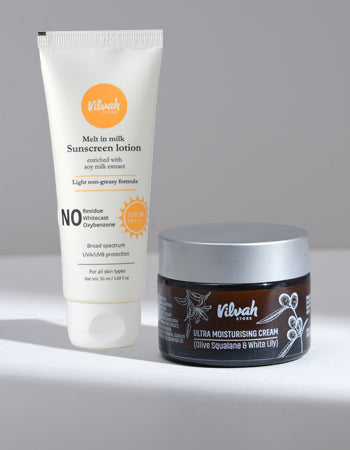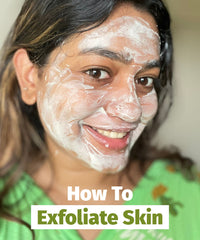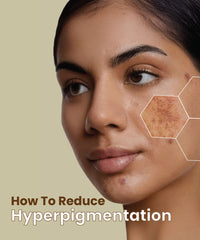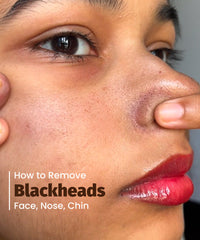With the season of hot chocolate and a cosy blanket around the corner, there is one thing you need to stock up on to avoid snowflakes on your face: a moisturiser & sunscreen. And we can already see a question popping up in your mind "Moisturiser makes sense, but why sunscreen?", now that's where you are missing the whole point. A sunscreen does not just protect you from the harmful UV rays but also from the blue light. All those endless screen time binge-watching your favourite show also counts.
In this blog post, you will get to know the ins and outs of face moisturiser and sunscreen, exploring advanced techniques for a skincare routine that goes beyond the basics.
Why should you use a moisturiser?
Moisturiser plays an important role in maintaining skin hydration. Dry skin can lead to a range of issues, including flakiness, redness, and itchiness. Moisturisers create a barrier on the skin's surface, locking in moisture and preventing water loss. Understanding the ingredients used in a skin moisturiser for oily skin can empower you to make informed decisions. Look for ingredients like white lily essential oil, olive squalane, and shea butter, which help lock in moisture and strengthen the skin's barrier. Also, consider other factors of your moisturiser – lighter formulations and non-comedogenic.
In winter, the cold and dry weather can leave your skin parched and vulnerable. The best moisturiser for dry skin becomes a winter essential and forms a protective barrier against the harsh elements. By replenishing lost moisture, a moisturiser ensures that your skin stays hydrated, comfortable, and radiant even in the challenging winter weather.
How to apply moisturiser for maximum skin hydration?
While the basic rule of applying moisturiser to clean, damp skin remains valid, there are advanced techniques to enhance its effectiveness. Consider applying face care products in upward motions to promote blood circulation. Also, don't forget your neck areas prone to premature ageing. Experiment with facial massage techniques, use gentle, upward strokes and focus on pressure points, such as your temples and jawline. A gentle massage can improve product absorption and contribute to a healthier complexion.
Why should you use sunscreen?
The best sunscreen cream for face is non-negotiable in any skincare routine, but its application goes beyond a simple slathering on the face. UV rays can penetrate through clouds, meaning your skin is still at risk of damage even on overcast days. Wearing a natural sunscreen every day, regardless of the weather, ensures consistent protection. Sunscreen helps preserve collagen levels, maintaining the skin's firmness and preventing sagging. UV rays can stimulate the production of melanin, leading to hyperpigmentation, such as sunspots and uneven skin tone. Sunscreen helps prevent the overproduction of melanin, maintaining a more even complexion.
How to apply sunscreen for maximum UV protection?
Opt for a broad-spectrum SPF 50 sunscreen or SPF30. Use a sufficient amount of sunscreen. And don't forget to apply it to often overlooked areas like the ears, neck, and hands. The recommended amount is about a teaspoon for the face, or you could use the three-finger rule to apply sunscreen for maximum protection. Apply spf for combination skin at least 15-30 minutes before going outside to allow it to absorb into the skin. Reapply sunscreen every two hours, more frequently if you're swimming or sweating heavily.
Layering moisturiser & sunscreen
- Start by cleansing your face to create a clear skin for your skincare routine.
- Once your face is clean, begin with your moisturiser. Applying moisturiser first helps to nourish the skin, providing it with essential hydration and creating a barrier that aids in preventing water loss.
- After allowing the moisturiser to absorb for a few minutes, move on to applying sunscreen. Choose a broad-spectrum sunscreen with an spf sunscreen 50.
- The reason for the sequence is to ensure that the sunscreen forms a protective layer on top of the moisturised skin. If you apply sunscreen first, it might not allow the moisturiser to penetrate effectively, potentially compromising its hydrating benefits. By allowing the moisturiser to absorb before applying sunscreen cream for body, you are maximizing the effectiveness of both products.
Conclusion
As winter invites us to savour the warmth of cosy moments and comforting self-care, remember that a little care for your skin goes a long way. With the right moisturiser, you're not just preventing dryness, you're indulging in a moment of self-care. Check out vilvah for the best moisturiser and natural skincare products. After all, well-moisturised skin is not just a shield against the winter, it's your radiant glow defying the winter blues.


 Track Order
Track Order












Leave a comment
All comments are moderated before being published.
This site is protected by hCaptcha and the hCaptcha Privacy Policy and Terms of Service apply.